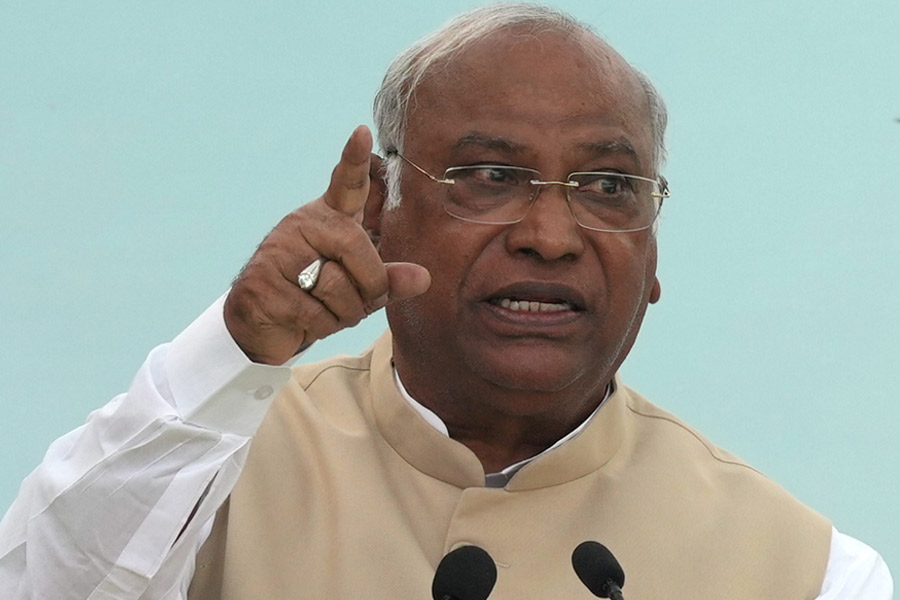|
|
| Picture by Sanjoy Chattopadhyaya |
Effective advertising techniques using a spectrum of persuasive communication tools can lead to higher sales, among other things. The devices used to grab attention have to be engaging at the very least to stand out in a clutter. The artists who had organized Art in Advertising (Aug 24-29) at the Birla Academy of Art & Culture seemed to be unaware of this basic principle. How else does one explain the jumble they had created in the exhibition space where the works of most artists were indistinguishable from one another?
There were 12 participants, some of whom were well known artists, but, save the distinctive signatures of two, the entire show seemed to have emanated from a single brain, whose power of imagination was not of a very high order. It was easy to identify the work of Partha Pratim Deb though, by the quirky lines and strange human figures — belonging to the lunatic fringe, perhaps — and these two elements were kind of strewn all over the place.
The second artist, whose signature could not perhaps be missed, was Hiran Mitra, known by his designs often based on geometry and bold brushstrokes using a limited number of dark colours. Here he used black and maroon with few variations. Identifying the artists posed an even greater problem owing to the absence of labels and captions. Some artists whose names figured on the invitation and whose works are seen off and on on the exhibition circuit were supposed to be there. Even if they were, there was no indication of their presence in this chaos.
The invitation describes the exhibition as a “group installation”. But was erasing the identity of participants one of the purposes of such a show? If so, why did Partha Pratim Deb’s works carry his signature? Was it because he is an artist of eminence? It is futile asking such questions as the “group” is nameless.
An element common to all the works was the sheets of “wall paper” produced by scribbling and doodling on paper in imitation of pages taken from newspapers and magazines at random. The dullness of this grey “newsprint” was enhanced by the colourless video produced by splicing together footage from a fashion show and shots of the art work on display. Not the most inspiring piece of video art, even by local standards, its dreariness magnified by poor projection. Jazz was playing all the while but that was canned music.
Two other elements strewn or propped up all over the floor were mannequins made of newspapers and posters and bottles wrapped with the same material. Advertisements showing scantily clad women with doodles all over them were hung on the walls. This is the cheapest and most obvious way of attracting attention and innovative advertisements eschew such ploys. Partha Pratim Deb, too, had used advertisements of mobile phones and other consumer products to create quirky images with pen and ink. Creative as he is, even Deb’s works were little different from the drawings he has been churning out over the years. It is a pity that he had to waste his talent on an exhibition such as this.
As if to add a touch of irony, a bright red folk Manasa (snake goddess) image spangled with big gold stars was planted in the middle of the hall. A fake poster read: “Government advertisement: Wanted tribal dead or alive — Rs 20 lakh reward” (the original was in Bengali). If this was meant to be a clever comment on the current political scene or on the exploitation of tribals and their crafts, it was lost on most viewers. Inspired as it was by terribly wrong ideas of smartness, a politically correct stand failed to redeem the exhibition from mediocrity.











